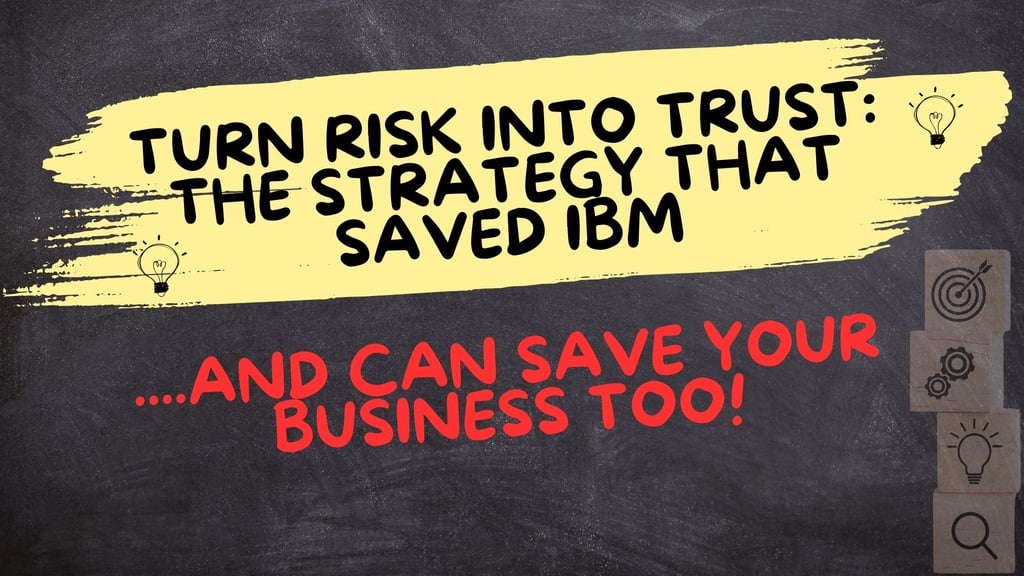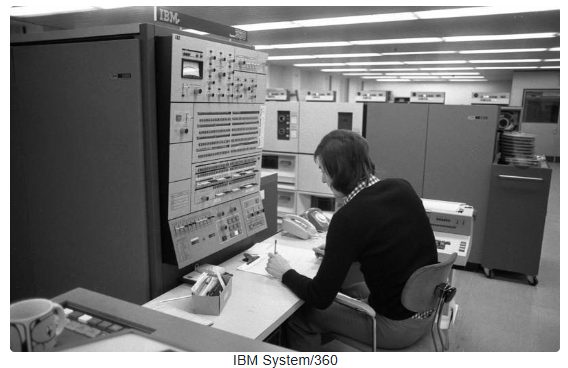Turn Risk Into Trust: The Strategy That Saved IBM (and Can Save Your Business)


In the 1970s, IBM faced intense competition. The once-unstoppable giant in business computers was suddenly under attack from companies like RCA, Xerox, and Digital Equipment Corporation, all boasting faster machines, bigger memories, and louder ads.
IBM’s iconic System/360 series—once the iPhone of the ‘60s—was falling behind. Customers were growing hungry for better, faster, and newer computers, leaving IBM’s sales team in panic mode.
How could they stay on top?
Instead of chasing competitors with specs and features, IBM played a different game—and it worked brilliantly.


The Strategy That Saved IBM 🚀
IBM’s sales team leaned on one advantage: trust.
Here’s the pitch they delivered to buyers:
IBM is the largest computer manufacturer.
Most businesses already use IBM—you're not alone.
If something goes wrong with IBM, nobody will blame you. But choosing a competitor? That’s risky.
The result? Buyers stopped comparing specs. They realized that even if another computer seemed better on paper, the personal risk of choosing a smaller, less proven brand just wasn’t worth it.
And thus, the famous phrase was born: "Nobody ever got fired for buying an IBM."
This unofficial slogan became one of the most powerful marketing ideas of all time. Buyers didn’t just want the best—they wanted peace of mind. IBM later reinforced this with an ad:
"What most people want from a computer company is a good night’s sleep."


Why Customers Choose the “Safe Option” 😮💨
This story highlights a common challenge: Even if your product or service is better or cheaper, customers often choose the safe option.
Why?
Risk aversion. B2B buyers, especially in high-stakes environments, make decisions emotionally. They want to minimize personal and professional risks.
Defensive decision-making. Economist Herbert A. Simon called this behavior satisficing. Buyers look for options that are “good enough” and carry the least risk.
Large enterprises or risk-averse industries are particularly prone to this behavior.
So, what if you’re competing against an industry giant? What if you are the challenger?
How Challengers Can Win: 3 Proven Strategies 💡
1. Counter-Position Against the Leader
Every strength has a weakness.
McKinsey? Brilliant but inexperienced consultants.
Starbucks? Great locations but average coffee.
Find the market leader’s Achilles’ heel. Then position your brand as the bold alternative. Make them the villain in your story, and become the obvious choice for customers seeking something different.
2. Divide and Conquer
If the broad market is too tough to dominate, narrow your focus.
Don’t aim to be the best sales training provider in the world.
Aim to be the best sales trainer for B2B software teams.
By specializing, you become the go-to expert in a niche.
Fewer competitors.
Tailored solutions.
Immediate trust from your target audience.
3. Reduce the Risk
If customers fear choosing a challenger, make it easy for them to say “yes.”
Offer guarantees (and make them bold).
Highlight past success stories.
Be upfront about how you’ll handle potential risks.
For example:
Money-back guarantees.
24/7 customer support.
Proof that you’ve solved similar problems for other clients.
Buyers care about reducing uncertainty. The more you mitigate their fears, the more likely they’ll choose you.
The Takeaway 🏆
IBM’s success wasn’t just about having the best product. It was about offering buyers something even more valuable: peace of mind.
If you’re competing against a market leader today, don’t just try to outdo them on features. Instead:
Position yourself as the bold alternative.
Specialize in a niche where you can dominate.
Build trust by reducing perceived risks.
In a world full of choices, sometimes the least risky option wins.
🔔 Follow for More: Don't miss out on future articles packed with practical tips and inspiring ideas.
Visit my website Kamaleonte Marketing.
Subscribe to my newsletter AI Sapiens.
Stay informed, stay adaptable, and keep thriving!
